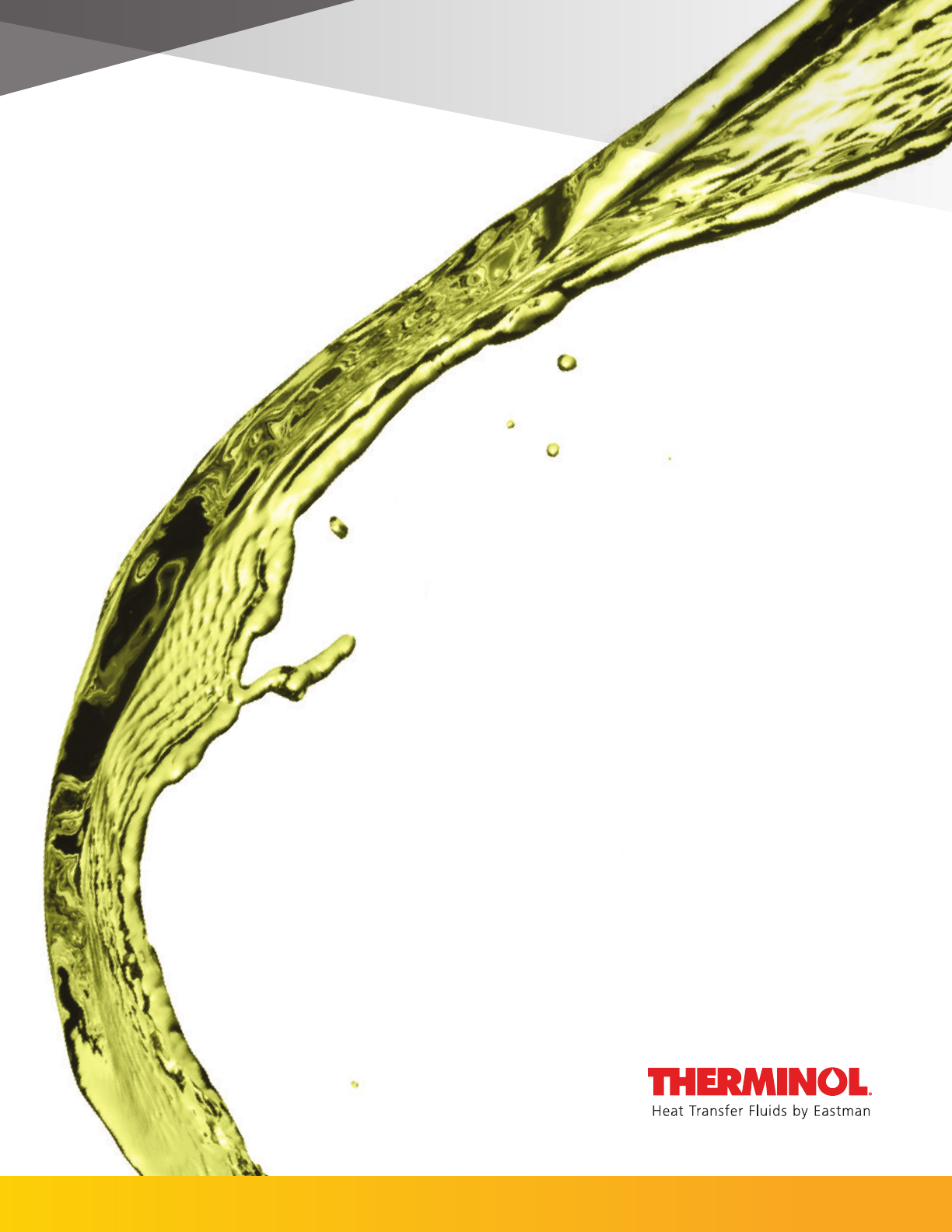
--28
°
to 290
°
C
(--18
°
to 550
°
F)
Efficient, reliable medium-
temperature-range fluid
heat transfer fluid
THERMINOL
®
55
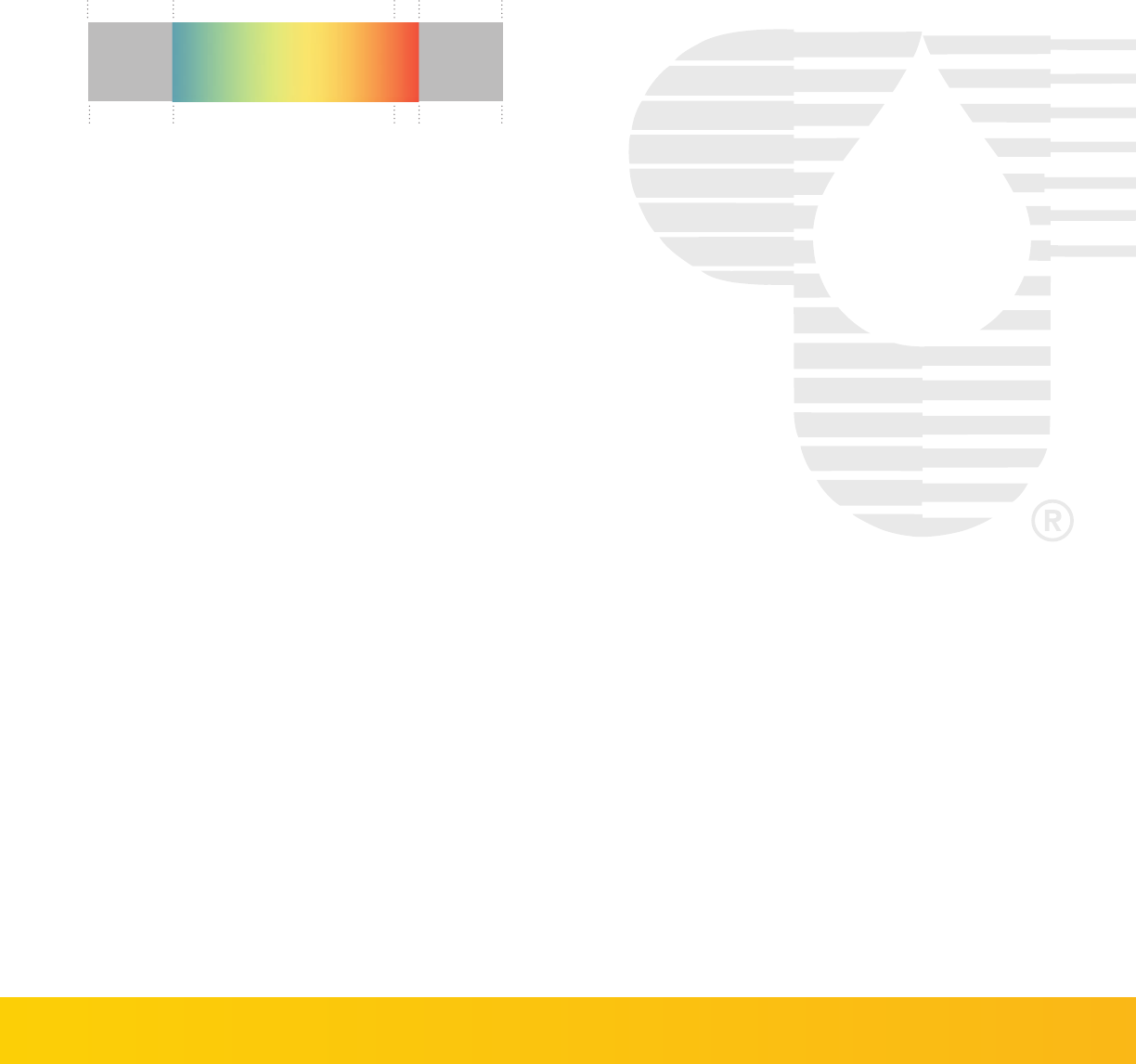
Eastman Therminol® 55 heat transfer fluid is
a unique, synthetic fluid designed to provide
reliable, consistent heat transfer performance
over a long life at maximum bulk temperatures
up to 290°C (550°F).
•
Delivers excellent cost performance over the fluid life when
compared to common mineral oil-based heat transfer fluids,
even when operating temperatures reach a maximum
extended use temperature of 315°C (600°F).
•
More readily pumpable at low temperatures than the majority
of other mineral oil-based heat transfer fluids.
•
Savings in capital, operations, and maintenance costs are
often achieved when used in applications that traditionally
use steam as a heating medium.
Therminol 55 is available in the Americas and Asia-
Pacific. Contact your local Eastman Therminol sales
representative for more information.
Physical and chemical
characteristics
Therminol 55 fluid is designed for use in nonpressurized/low-
pressure, indirect heating systems. It delivers efficient, dependable,
uniform process heat with no need for high pressures. The high
boiling point of Therminol 55 helps reduce the volatility and fluid
leakage problems associated with other fluids.
The recommended maximum bulk and film temperatures for
Therminol 55 are based on industry-standard thermal studies.
Operation at or below these temperature maximums can
provide long service life under most operating conditions.
Actual fluid life is dependent on the total system design and
operation and can vary by heat transfer fluid chemistry. As
fluid ages, the formation of low- and high-boiling compounds
may result. Low-boiling compounds should be vented from the
system as necessary to a safe location away from personnel and
sources of ignition and in compliance with applicable regulations
and laws. The high-boiling compounds can be very soluble in
the fluid. Significant overheating or fluid contamination will
accelerate decomposition and may result in increased high-
boiler and solids concentrations. Excess solids can typically be
filtered for removal.
Therminol 55 has been shown to be significantly less sensitive
than mineral oils to the negative consequences (sludging,
fouling) of thermal oxidation. Eastman recommends that
systems utilizing Therminol 55 fluid should be blanketed with an
atmosphere of inert gas to protect against the effects of fluid
oxidation on its performance and life expectancy. Pressure relief
device(s) should be installed where required.
Therminol 55 is noncorrosive to metals commonly used in the
construction of heat transfer systems.
While Therminol 55 has a relatively high flash point, it is not
classified as a fire-resistant heat transfer fluid. Consequently,
the use of protective devices may be required to minimize fire
risk and users of Therminol 55 should check with their safety
and risk management experts for specific instructions.
800
–225
Max. extended use temp, 600
Max. bulk use temp., 550
Min. use temp., –18
°F
427
–145
315
290
–28
°C
heat transfer fluid
THERMINOL
®
55
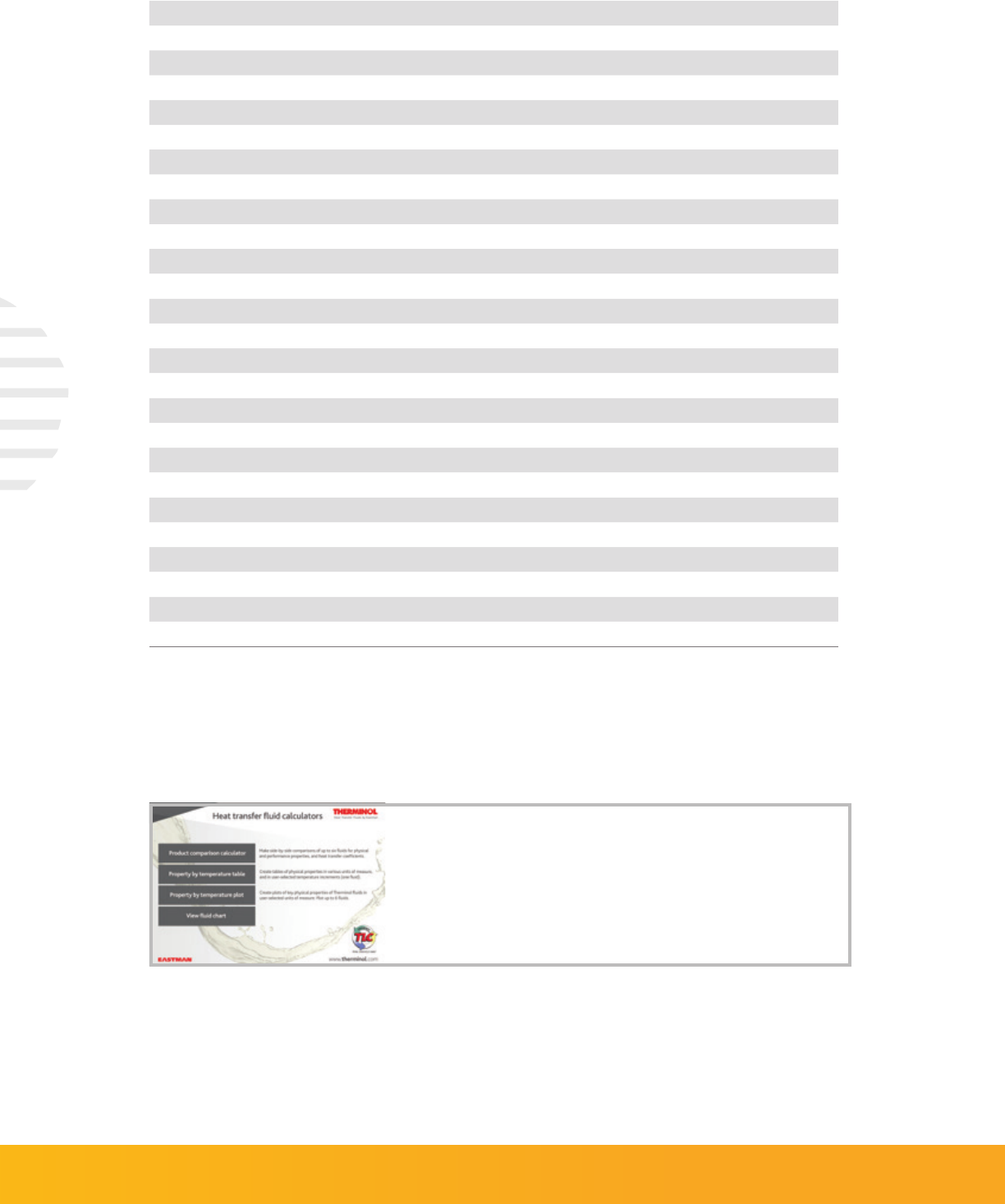
Typical properties
a
a
These data are based on samples tested in the laboratory and are not guaranteed for all samples. Contact us for complete sales specifications for
Therminol 55 fluid. Does not constitute an express warranty. See disclaimer on the back page of this bulletin.
For the technical service contact in your region,
visit the CONTACT US page on our website, www.therminol.com.
Appearance Clear, yellow liquid
Composition Synthetic hydrocarbon mixture
Maximum bulk temperature 290°C (550°F)
Maximum extended use temperature 315°C (600°F)
Maximum film temperature 335°C (635°F)
Normal boiling point 351°C (664°F)
Pumpability, at 300 mm²/s (cSt) –8°C (17°F)
Pumpability, at 2000 mm²/s (cSt) –28°C (–18°F)
Flash point, COC (ASTM D-92) 177°C (350°F)
Autoignition temperature (ASTM E-659) 366°C (691°F)
Autoignition temperature (DIN 51794) 382°C (719°F)
Pour point (ISO 3016) –54°C (–65°F)
Minimum liquid temperatures for fully developed turbulent flow (N
Re
> 10000)
10 ft/s, 1-in. tube (3.048 m/s, 2.54-cm tube) 67°C (152°F)
20 ft/s, 1-in. tube (6.096 m/s, 2.54-cm tube) 45°C (114°F)
Minimum liquid temperatures for transitional region flow (N
Re
> 2000)
10 ft/s, 1-in. tube (3.048 m/s, 2.54-cm tube) 24°C (75°F)
20 ft/s, 1-in. tube (6.096 m/s, 2.54-cm tube) 11°C (52°F)
Coefficient of thermal expansion @ 200°C 0.000961/°C (0.000534/°F)
Heat of vaporization at maximum use temperature 228 kJ/kg (98.1 Btu/lb)
Average molecular weight 320
Pseudocritical temperature 512°C (953°F)
Pseudocritical pressure 13.2 bar (191 psia)
Pseudocritical density 258 kg/m
3
(16.1 lb/ft
3
)
Moisture content, maximum (ASTM E-203) 150 ppm
Dielectric constant @ 23°C (ASTM D-924) 2.23
To create your own customized table
with preferred properties, units of measure,
and temperature intervals, visit
www.therminol.com/resources
and download the Therminol heat transfer fluid calculator.
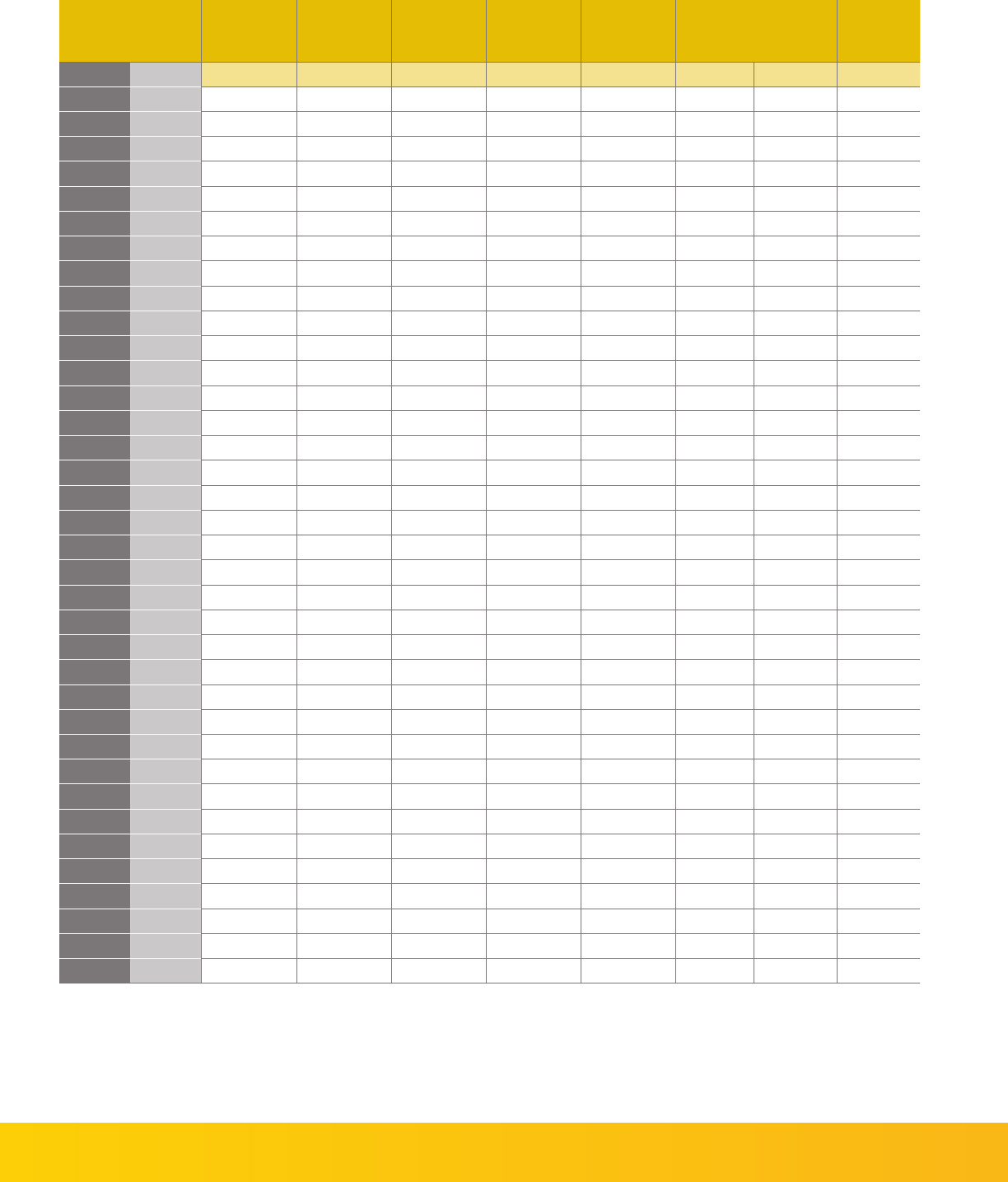
Temperature
Liquid
density
Liquid
heat
capacity
Heat of
vaporization
Liquid
enthalpy
b
Liquid
thermal
conductivity Liquid viscosity
c
Vapor
pressure
d
°C °F kg/m
3
kJ/(kg·K) kJ/kg kJ/kg W/(m·K) cP (mPa·s) cSt (mm
2
/s) kPa
–28
–18 904 1.73 418.0 –18.8 0.1340 1820 2010 —
–20
–4 899 1.76 412.0 –3.9 0.1331 756 841 —
–10
14 892 1.80 405.0 13.9 0.1319 309 346 —
0
32 885 1.83 398.1 32.0 0.1307 143 162 —
10
50 878 1.87 391.3 50.6 0.1296 73.8 84.0 —
20
68 872 1.91 384.6 69.4 0.1284 41.6 47.7 —
30
86 865 1.94 377.9 88.7 0.1273 25.2 29.2 —
40
104 858 1.98 371.4 108.3 0.1261 16.3 19.0 —
50
122 852 2.01 364.9 128.2 0.1249 11.1 13.1 —
60
140 845 2.05 358.5 148.5 0.1238 7.93 9.39 —
70
158 838 2.08 352.2 169.2 0.1226 5.89 7.02 —
80
176 831 2.12 345.9 190.2 0.1214 4.52 5.43 0.011
90
194 825 2.16 339.8 211.6 0.1203 3.56 4.32 0.019
100
212 818 2.19 333.7 233.3 0.1191 2.88 3.52 0.032
110
230 811 2.23 327.8 255.4 0.1179 2.38 2.93 0.054
120
248 804 2.26 321.8 277.9 0.1168 2.00 2.49 0.088
130
266 797 2.30 316.0 300.7 0.1156 1.71 2.14 0.140
140
284 790 2.33 310.2 323.8 0.1144 1.48 1.87 0.219
150
302 784 2.37 304.5 347.3 0.1133 1.29 1.65 0.334
160
320 777 2.40 298.8 371.2 0.1121 1.14 1.47 0.501
170
338 770 2.44 293.2 395.4 0.1109 1.02 1.32 0.738
180
356 763 2.47 287.7 420.0 0.1098 0.913 1.20 1.07
190
374 755 2.51 282.2 444.9 0.1086 0.825 1.09 1.53
200
392 748 2.54 276.7 470.1 0.1074 0.749 1.00 2.15
210
410 741 2.58 271.3 495.7 0.1062 0.683 0.921 2.98
220
428 734 2.61 265.9 521.7 0.1051 0.625 0.852 4.07
230
446 726 2.65 260.5 548.0 0.1039 0.574 0.790 5.51
240
464 719 2.68 255.1 574.7 0.1027 0.528 0.735 7.37
250
482 711 2.72 249.7 601.7 0.1015 0.488 0.686 9.76
260
500 704 2.75 244.3 629.1 0.1004 0.451 0.641 12.8
270
518 696 2.79 239.0 656.8 0.0992 0.418 0.600 16.6
280
536 688 2.83 233.5 684.9 0.0980 0.387 0.563 21.3
290
554 680 2.86 228.1 713.3 0.0968 0.360 0.529 27.2
300
572 672 2.90 222.6 742.1 0.0957 0.334 0.497 34.4
310
590 663 2.93 217.1 771.2 0.0945 0.311 0.468 43.1
320
608 655 2.97 211.5 800.7 0.0933 0.289 0.441 53.7
Liquid properties of Therminol
®
55 heat transfer fluid by temperature
a
(SI units)
a
Maximum recommended bulk temperature 290°C (550°F). These data are based on samples tested in the laboratory and are not guaranteed for all samples. Contact us for complete
sales specifications for Therminol 55 fluid.
b
Liquid enthalpy basis is –17.8ºC (0ºF).
c
1 cSt = 1 mm
2
/s and 1 mPa•s =1 cP.
d
100 kPa =1 bar.
e
Maximum extended use temperature
is 315ºC (600ºF).
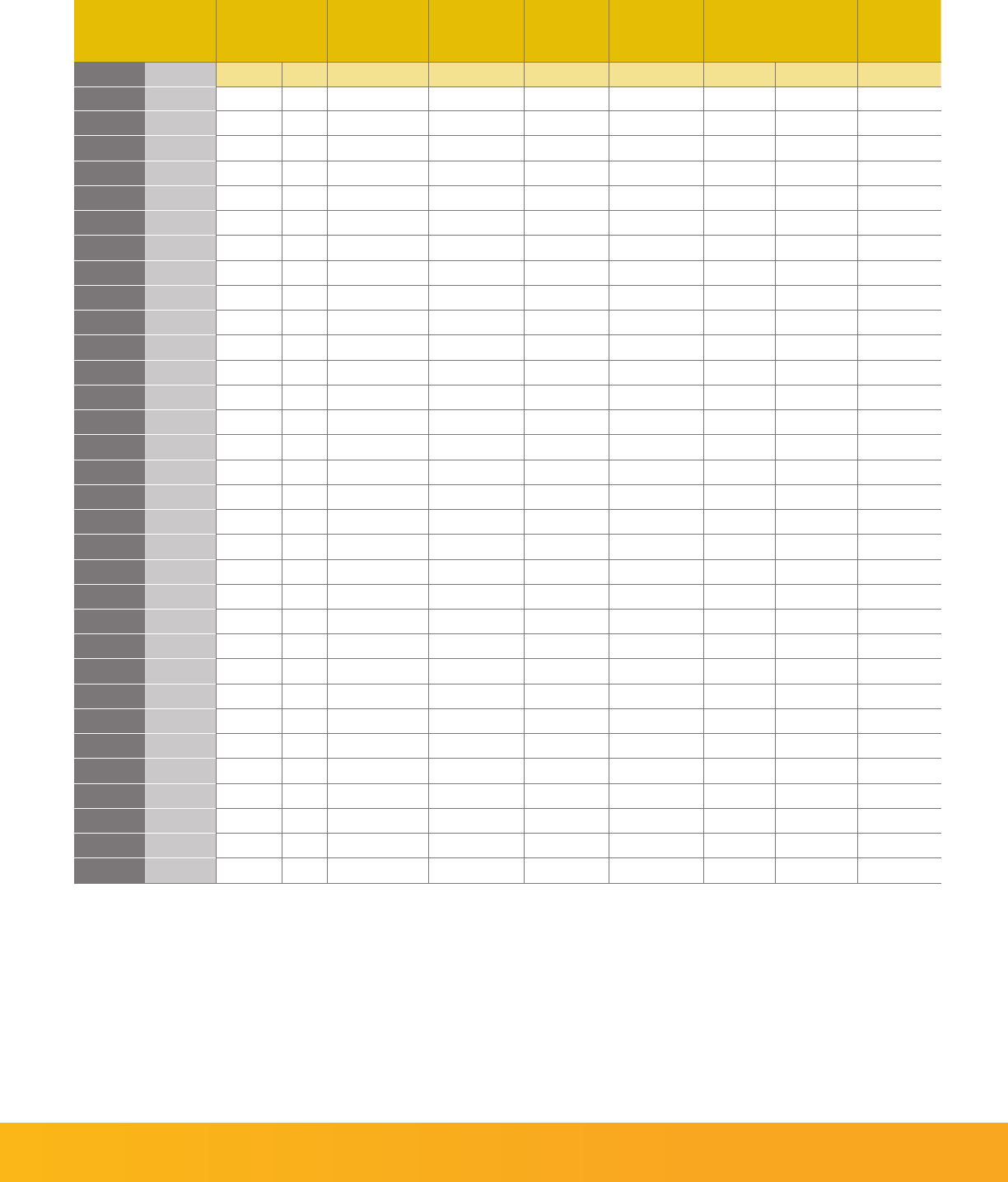
Liquid properties of Therminol
®
55 heat transfer fluid by temperature
a
(English units)
Temperature Liquid density
Liquid
heat capacity
Heat of
vaporization
Liquid
enthalpy
b
Liquid
thermal
conductivity Liquid viscosity
c
Vapor
pressure
d
°F °C lb/gal lb/ft
3
Btu/(lb·°F) Btu/lb Btu/lb Btu/(ft·h·°F) lb/(ft·h) cSt (mm
2
/s) psia
–18
–28 7.55 56.5 0.414 179.8 –8.1 0.0775 4400 2010 —
0
–18 7.49 56.0 0.423 176.6 0.0 0.0768 1480 683 —
20
–7 7.42 55.5 0.433 173.3 8.6 0.0760 571 265 —
40
4 7.36 55.1 0.442 170.0 17.3 0.0753 255 120 —
60
16 7.30 54.6 0.452 166.7 26.2 0.0745 128 60.7 —
80
27 7.24 54.1 0.461 163.5 35.4 0.0738 71.5 34.1 —
100
38 7.18 53.7 0.471 160.4 44.7 0.0731 43.2 20.8 —
120
49 7.11 53.2 0.480 157.3 54.2 0.0723 28.0 13.6 —
140
60 7.05 52.7 0.490 154.2 63.9 0.0716 19.2 9.39 —
160
71 6.99 52.3 0.499 151.2 73.8 0.0708 13.8 6.82 —
180
82 6.93 51.8 0.509 148.2 83.9 0.0701 10.3 5.15 0.0018
200
93 6.86 51.3 0.518 145.3 94.1 0.0693 8.01 4.03 0.0033
220
104 6.80 50.9 0.527 142.4 104.6 0.0686 6.39 3.24 0.0059
240
116 6.74 50.4 0.537 139.6 115.2 0.0678 5.22 2.67 0.010
260
127 6.67 49.9 0.546 136.8 126.1 0.0671 4.35 2.25 0.017
280
138 6.61 49.4 0.556 134.0 137.1 0.0663 3.69 1.92 0.029
300
149 6.55 49.0 0.565 131.3 148.3 0.0656 3.17 1.67 0.046
320
160 6.48 48.5 0.574 128.6 159.7 0.0648 2.76 1.47 0.073
340
171 6.42 48.0 0.584 125.9 171.3 0.0641 2.43 1.31 0.112
360
182 6.35 47.5 0.593 123.2 183.0 0.0633 2.16 1.17 0.168
380
193 6.28 47.0 0.602 120.6 195.0 0.0626 1.93 1.06 0.248
400
204 6.22 46.5 0.612 118.0 207.1 0.0618 1.74 0.964 0.360
420
216 6.15 46.0 0.621 115.4 219.5 0.0610 1.57 0.881 0.515
440
227 6.08 45.5 0.630 112.8 232.0 0.0603 1.43 0.810 0.724
460
238 6.01 45.0 0.640 110.3 244.7 0.0595 1.30 0.747 1.00
480
249 5.94 44.5 0.649 107.7 257.6 0.0588 1.19 0.691 1.37
500
260 5.87 43.9 0.658 105.1 270.6 0.0580 1.09 0.641 1.85
520
271 5.80 43.4 0.668 102.5 283.9 0.0573 1.00 0.596 2.47
540
282 5.73 42.8 0.677 100.0 297.3 0.0565 0.922 0.555 3.27
560
293 5.65 42.3 0.686 97.3 311.0 0.0558 0.849 0.518 4.27
580
304 5.58 41.7 0.696 94.7 324.8 0.0550 0.783 0.484 5.52
600
e
316 5.50 41.1 0.705 92.1 338.8 0.0542 0.722 0.453 7.07
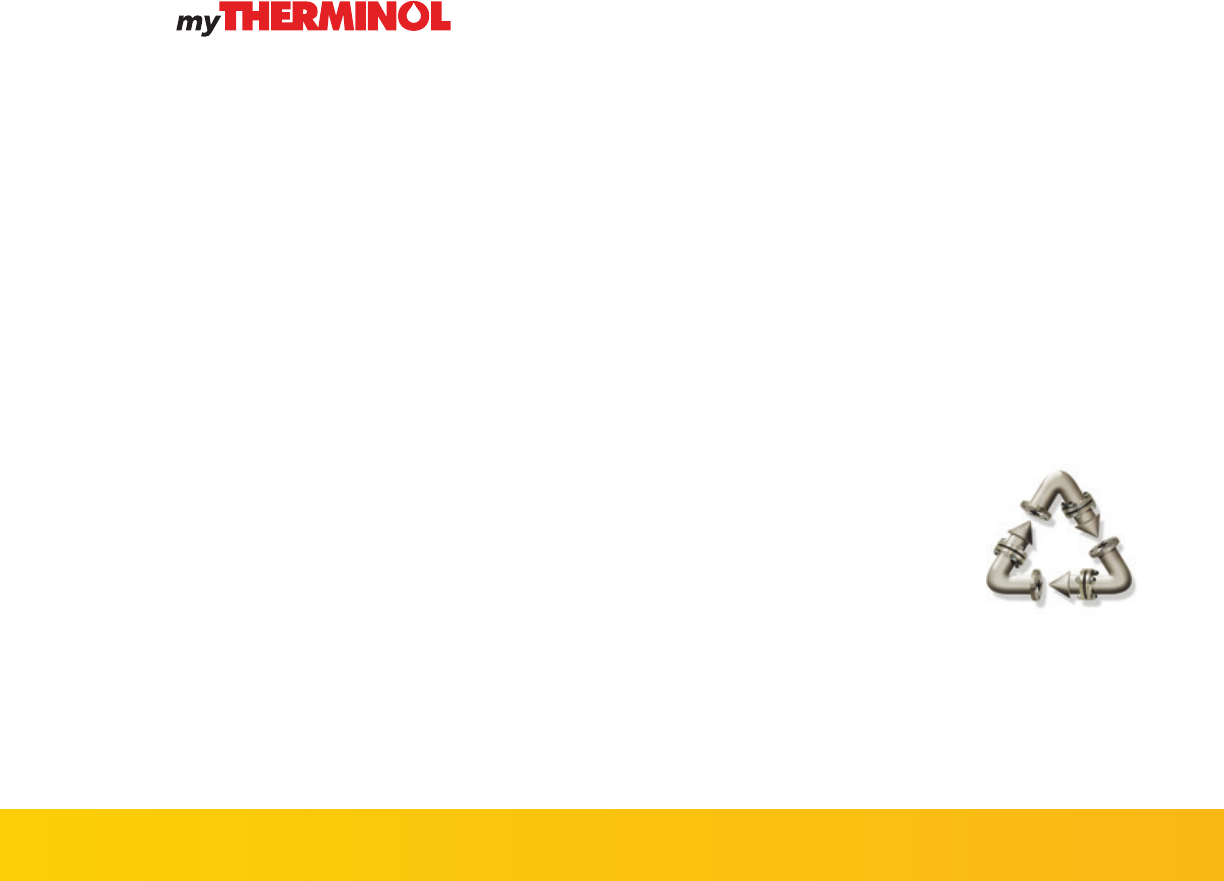
In-service heat transfer fluid
sample analysis
When Therminol heat transfer fluids are used within suggested
temperature limits, they may provide years of trouble-free service.
To help users get maximum life, Eastman offers testing of
in-service heat transfer fluids to detect contamination, moisture,
thermal degradation, and other conditions that may impact
system performance. This comprehensive analysis includes
acid number, kinematic viscosity, insoluble solids, low boilers,
high boilers, and moisture content. Additional special analyses
are available on request. Sample analysis includes sample
collection kits that are easy to use. Most systems should be
sampled annually. Users should also sample anytime a fluid-
related problem is suspected.
Results of the test are presented in a detailed report that provides
suggestions for corrective action. Test results are stored in a
database for future reference. Customers can access their specific
test information via my.therminol.com.
Technical service hotline
Experienced technical service specialists can help answer your
questions regarding heat transfer fluid selection, system start-ups,
system design, and operational issues.
System design support
Eastman regularly assists some of the world’s largest engineering,
chemical, and equipment manufacturing companies on the design
and operation of heat transfer systems. Our liquid phase and
vapor phase design guide information and system design data
have been field tested in numerous installations. Eastman also
conducts engineering seminars for customers, engineering firms,
and equipment manufacturers to cover a wide range of heat
transfer fluid system design and operation issues. Customers can
request a technical service visit to audit heat transfer systems for
fluid loss and leak prevention opportunities.
Operational training
Eastman believes that by sharing our experience with customers,
we can help improve system design, promote safety, and reduce
overall cost. Customers can take advantage of Eastman’s heat
transfer system operation and product training programs. These
programs are customized to suit the varied needs of frontline
technicians, operations supervisors, and maintenance technicians
to design engineers. Customers can also receive training assistance
for dealing with important topics like fluid safety and handling.
Safety awareness training
At Eastman, we’re “All in for Safety.” We provide our customers
safety awareness training that focuses on the design, start-up,
operation, and maintenance of heat transfer fluid systems.
Start-up assistance
Eastman provides start-up assistance by reviewing procedures
and offering suggestions to reduce typical problems. Customers
can also receive help by calling their local Eastman technical
specialist or through on-site assistance.
Flush fluid and fluid refill
Liquid phase heat transfer systems can be cleaned with Therminol®
FF flushing fluid. After the system is flushed, the appropriate liquid
phase Therminol heat transfer fluid can be added.
Fluid trade-in program*
As part of our commitment to sustainability
and the environment, Eastman offers a trade-in
program for used Therminol and competitive heat
transfer fluids. Depending on the fluid and its
condition, it may be turned in for potential credit
towards the purchase of new Therminol heat
transfer fluid.
TLC Total Lifecycle Care
®
*Available in North America. Contact your local sales representative for more information.
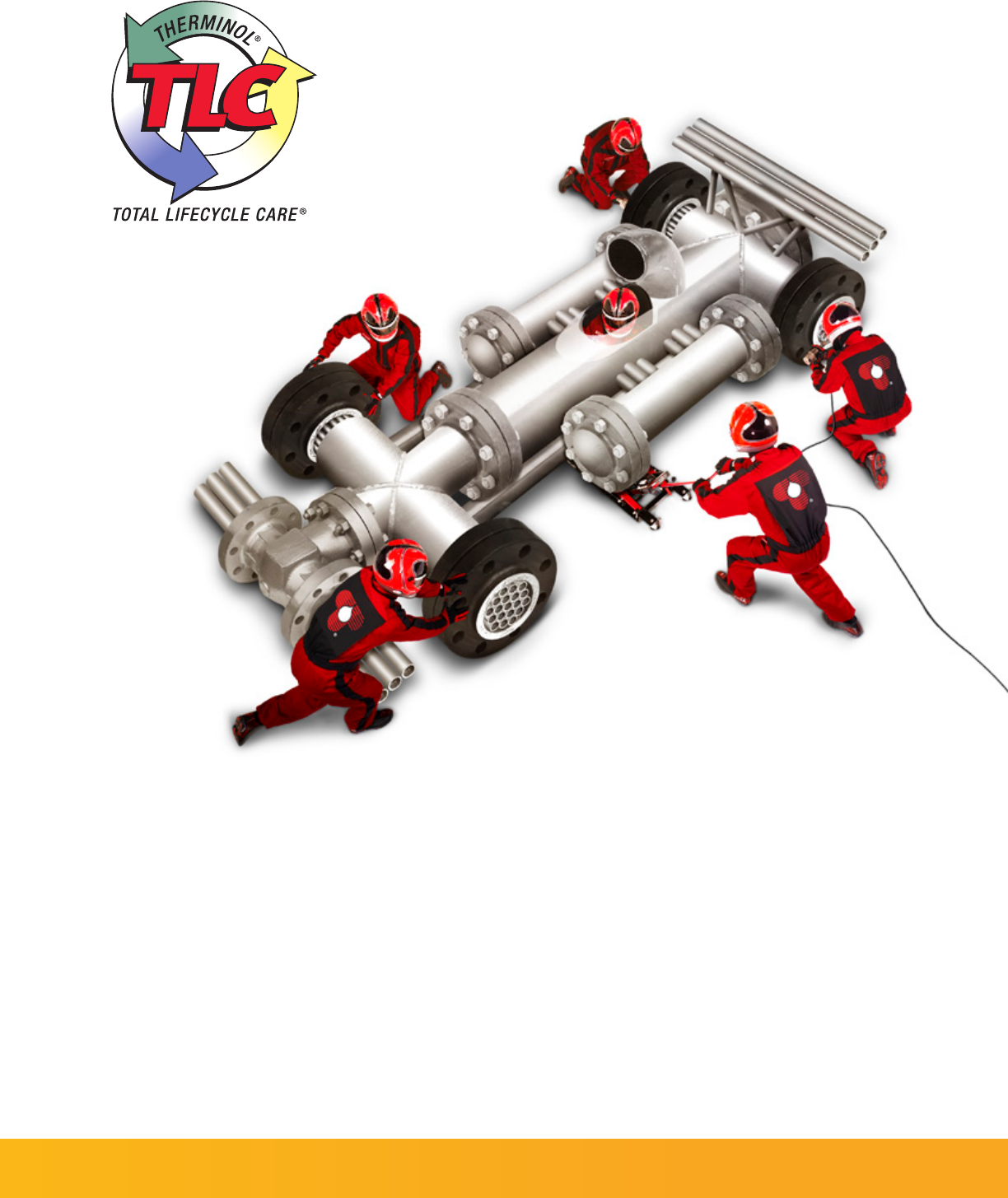
Eastman’s TLC Total Lifecycle Care
®
program is
designed to support Therminol customers throughout
their systems’ life cycle. This comprehensive program
includes system design support, start-up assistance,
training, sample analysis, flush and refill fluids, and our
fluid trade-in program. In North America, call our
hotline at 1-800-433-6997 or contact your local sales
or technical representative.

TF-25 12/15
Although the information and recommendations set forth herein are presented in good faith, Eastman Chemical
Company and its subsidiaries make no representations or warranties as to the completeness or accuracy thereof.
You must make your own determination of its suitability and completeness for your own use, for the protection
of the environment, and for the health and safety of your employees and purchasers of your products. Nothing
contained herein is to be construed as a recommendation to use any product, process, equipment, or formulation
in conflict with any patent, and we make no representations or warranties, express or implied, that the use thereof
will not infringe any patent. NO REPRESENTATIONS OR WARRANTIES, EITHER EXPRESS OR IMPLIED, OF
MERCHANTABILITY, FITNESS FOR A PARTICULAR PURPOSE, OR OF ANY OTHER NATURE ARE MADE HEREUNDER
WITH RESPECT TO INFORMATION OR THE PRODUCT TO WHICH INFORMATION REFERS AND NOTHING HEREIN
WAIVES ANY OF THE SELLER’S CONDITIONS OF SALE.
Safety Data Sheets providing safety precautions that should be observed when handling and storing our products
are available online or by request. You should obtain and review available material safety information before
handling our products. If any materials mentioned are not our products, appropriate industrial hygiene and other
safety precautions recommended by their manufacturers should be observed.
© 2015 Eastman Chemical Company. Eastman brands referenced herein are trademarks of Eastman Chemical
Company or one of its subsidiaries. The ® used on Eastman brands denotes registered trademark status in the U.S.;
marks may also be registered internationally. Non-Eastman brands referenced herein are trademarks of their
respective owners.
Eastman Chemical Company
Corporate Headquarters
P.O. Box 431
Kingsport, TN 37662-5280 U.S.A.
U.S.A. and Canada, 800-EASTMAN (800-327-8626)
Other Locations, +(1) 423-229-2000
www.eastman.com/locations
North America
Solutia Inc.
A subsidiary of Eastman Chemical Company
575 Maryville Centre Drive
St. Louis, MO 63141 U.S.A.
Telephone:
Customer Service, 800-426-2463
Technical Service, 800-433-6997
Fax: Customer Service, (1) 314-674-7433
Latin America
Solutia Brasil Ltda.
A subsidiary of Eastman Chemical Company
Rua Alexandre Dumas, 1711—Birmann 12—
7º Andar 04717-004
São Paulo, SP, Brazil
Telephone:
Brazil, 0800 55 9989
Other Locations, +55 11 3579 1800
Fax: +55 11 3579 1833
Europe/Middle East/Africa
Solutia Europe SPRL/BVBA
A subsidiary of Eastman Chemical Company
Corporate Village—Aramis Building
Leonardo Da Vincilaan 1
1935 Zaventem, Belgium
Telephone: +32 2 746 5000
Fax: +32 2 746 5700
Asia Pacific
Eastman (Shanghai) Chemical
Commercial Company Ltd.
Building 3, Yaxin Science & Technology Park
Lane 399 Shengxia Road
Pudong New District
201210, Shanghai, P.R. China
Telephone: +86 21 6120 8700
Fax: +86 21 5027 9229
For more information or to find the sales or technical contact nearest you, visit the “Contact us” page on our website:
www.therminol.com.
